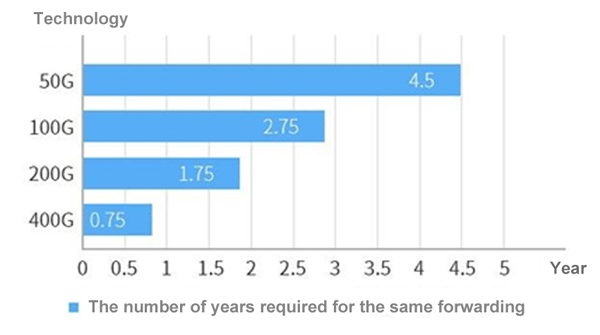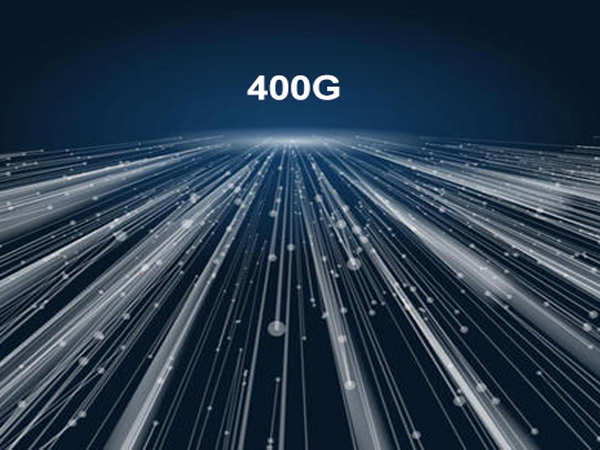
400G Ethernet will become the leading network technology standard by 2020, according to network forecasts from industry leading cloud service providers (CSPS) and numerous research institutions. This has been confirmed by IDC and market research firms. The number of 400Gbps ports will continue to grow over the next five years, with 400Gbps switch port shipments exceeding 15 million, according to the latest report. With the explosive growth of network traffic, 400G will undoubtedly be the dominant rate of the market in the future.


Promote the development of the 25G/100G market
Because 25G can provide a network base for existing 100G (4*25Gbps), upcoming 400G (8*50Gbps) and future 800G Ethernet networks over 10G, the industry prefers to lay 25G and 100G networks ahead of time to better transition to the future 400G. Therefore, the rapid development of 400G will also promote the development of 25G and 100G markets to some extent.
Reduce network operation and maintenance costs
In the interconnection of access, metropolitan area and internal equipment of data center, the transmission distance is shorter, the bandwidth demand is larger, and the fiber resource is relatively scarce. Single carrier 400G technologies can provide large bandwidth transmission through simple configuration and effectively reduce transmission cost. In the backbone and more complex man, the transmission distance is longer, the number of nodes is more stringent requirements on transmission performance; Dual-carrier 400G technology (2*200G) and optimization algorithms can compress channel intervals, improve spectrum efficiency, extend transmission distances to thousands of kilometers, and help operators quickly deploy networks with minimal bandwidth resources. At the same time, the 400G solution can increase single-fiber capacity by 40%, reduce power consumption by 40%, and greatly improve network performance, thus reducing network operation and maintenance costs.
Fiber optic market active OM5 is particularly outstanding
For multi-mode cabling systems, the biggest difference between 100G and 400G is the increase in the total number of fibers; for single-mode wiring systems, 400G can still be used for duplex LC and MPO/MTP wiring systems used in 100G. For parallel or multiple optical fiber transmission, for example, 400GBase-SR4.2 adopts 4-way parallel transmission technology and short-wavelength division multiplexing technology, and OM5 multi-mode fiber can achieve a transmission distance of 150 meters when wiring, which is slightly longer than the transmission distance of OM3/MO4. Therefore, the arrival of 400G will promote the development of optical fiber market, especially OM5 multi-mode fiber.
There is no doubt that 400G Ethernet is inevitable.
For businesses, opportunities and challenges coexist. Nowadays, major suppliers have successively launched 400G products. However, there are not many suppliers with sufficient supply capacity and stable quality. In order to win in the fierce 400G market competition, in addition to improving product quality and supply capacity, product solution suppliers also need to focus on user pain points from the essence, such as construction cost and smooth transition.
For users, the fierce competition of 400G and rapid technological development will bring many benefits. Of course, it cannot be denied that 400G is still in the seller‘s market and the overall construction cost is relatively high. However, with the standardization, scale and mass production of 400G products, the construction cost of 400G will be gradually reduced and users will have more choices. In addition, with the significant reduction in 25G and 100G deployment costs, it is undoubtedly beneficial for users who have urgent needs for 400G, as well as those who are on the sidelines or have not yet had urgent needs.
The 400G era is coming. Are you ready?
